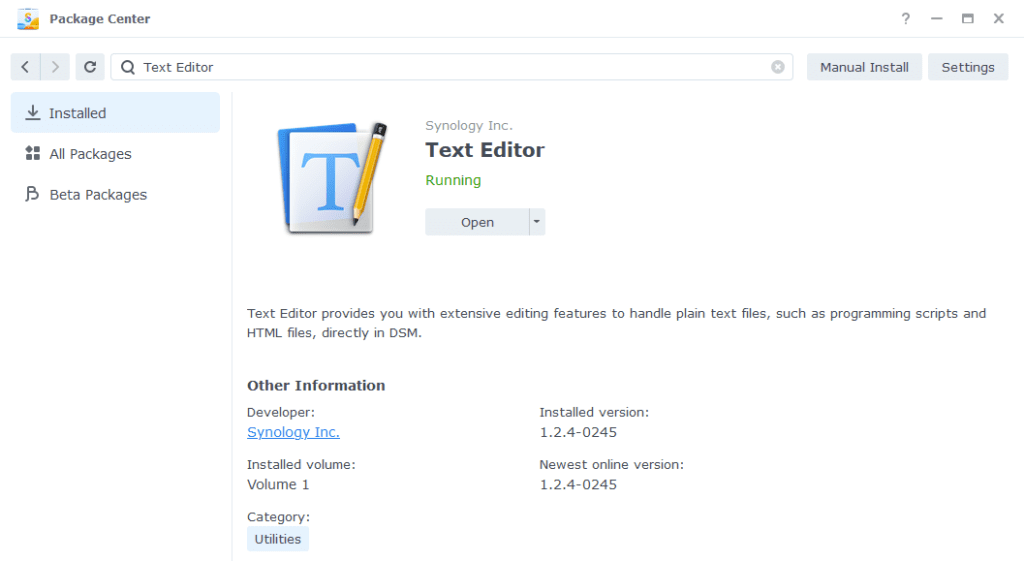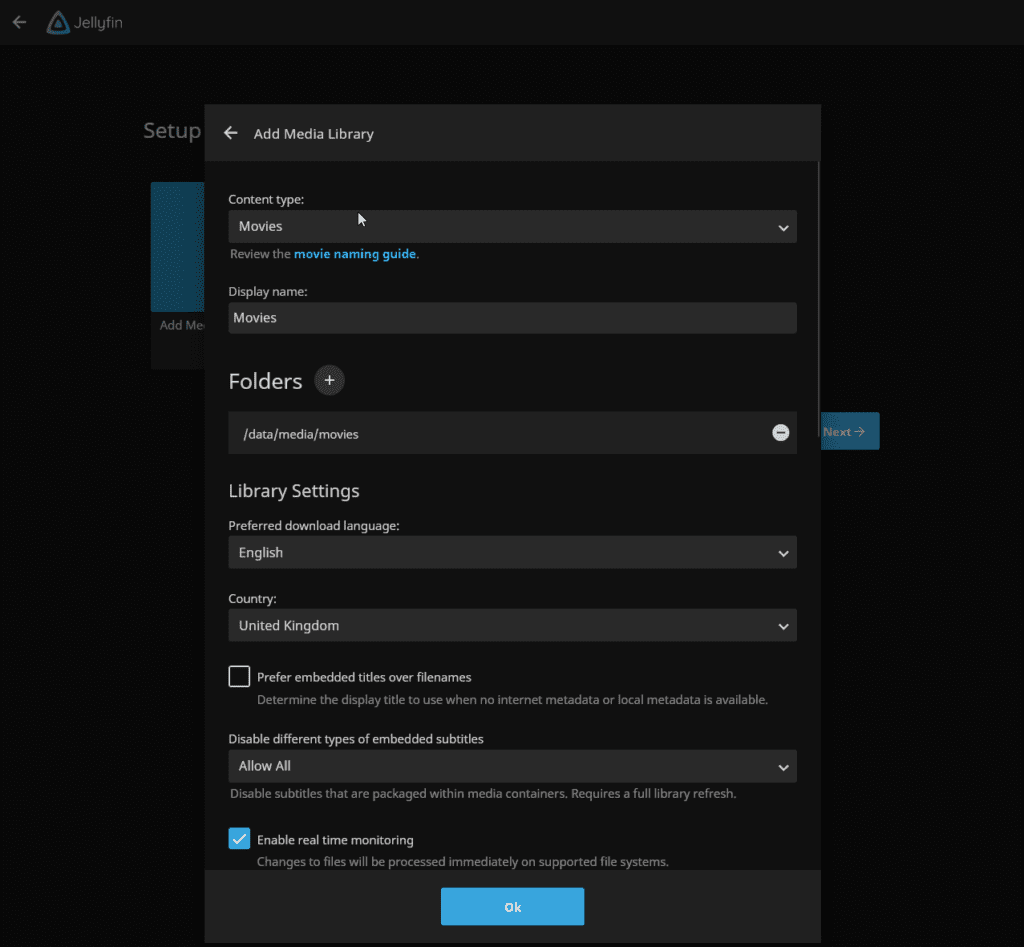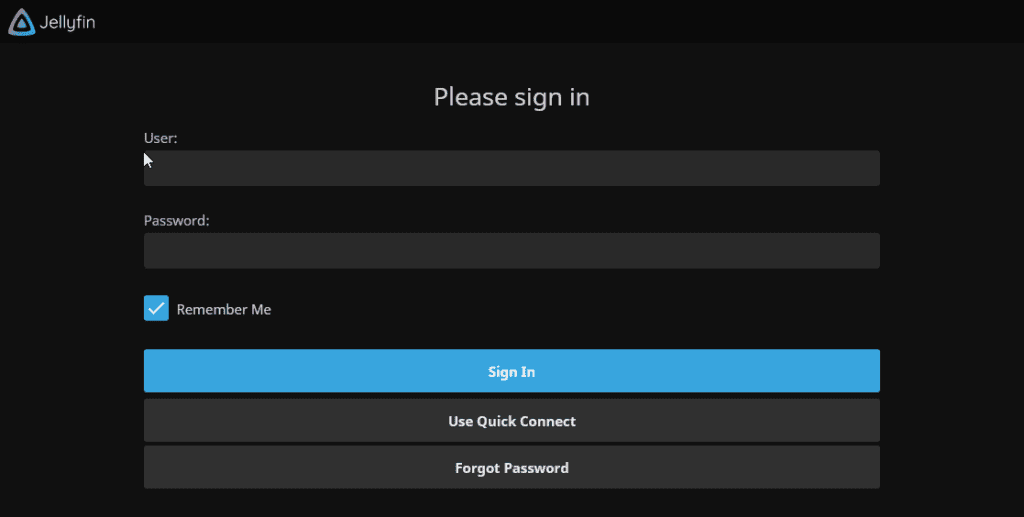Last updated on 6 April 2025
Please note if you are using DSM7.2 or higher you should use the Container Manager version of this guide from the menu.
This guide has reached the end of its updates as most people are now on the latest DSM update - This guide is correct as of 08/12/2023 however no further updates will be added.
| Update | Date |
|---|---|
| Amended the devices mounted to the container as had reports of better performance with them. | 17/05/2023 |
In this guide I am going to take you through the setup of Jellyfin in Docker using Docker Compose.
As of writing the Synology UI does not have the capability of passing through specific hardware to a container, this means we will need to set up Jellyfin via SSH using Docker Compose. However, don’t freak out as it’s not that difficult!
Does my Synology support Hardware Transcoding?
Before we do anything else, you need to make sure your model of Synology has hardware transcoding capabilities. You need to do a quick lookup via the linked Google Sheet below, this is updated by Plex however it’s perfectly relevant for Jellyfin.
If you find that your model does not support hardware transcoding you can jump back over to the standard guide.
Let’s Begin
As usual, it’s important you complete the three preceding guides which will get your folder structure and docker, user and bridge network setup.
- Step 0.5 : Docker, Memory Recommendations and Limitations
- Step 1: Directory Setup Guide
- Step 2: Setting up a restricted Docker user
- Step 3: Setting up a Docker Bridge Network
Docker Compose
We will be using Docker Compose to set up the Jellyfin container. In a nutshell we will be creating a text file (YAML formatted) which tells Docker exactly how we want to set up a specific container.
The next steps can be done either using a code/text editor such as Notepad++ or to keep things simple for this guide we will be using the Synology Text Editor which can be installed from the Package Center.

Open up Text Editor and click on File then New to start a new file.

You can now copy and paste the details below into the new text file, it is important you don’t change the spacing as YAML has to be formatted correctly in order to be read by Docker Compose.
services:
jellyfin:
image: linuxserver/jellyfin:latest
container_name: jellyfin
environment:
- PUID=1234 #CHANGE_TO_YOUR_UID
- PGID=65432 #CHANGE_TO_YOUR_GID
- TZ=Europe/London #CHANGE_TO_YOUR_TZ
- JELLYFIN_PublishedServerUrl=YOURNASIP
volumes:
- /volume1/docker/jellyfin:/config
- /volume1/data/media:/data/media
devices:
- /dev/dri/renderD128:/dev/dri/renderD128
- /dev/dri/card0:/dev/dri/card0
ports:
- 8096:8096 #web port
- 8920:8920 #optional
- 7359:7359/udp #optional
network_mode: synobridge
restart: unless-stoppedThe two optional ports in the above can be removed if you will not use them. 7359 is for automated discovery of Jellyfin by the apps, and 8920 is the HTTPS port which is useful if not using the reverse proxy later in the guide.
Environment Variables
We need to make some changes in order for the container to have the correct permissions to save its configuration files and to have access to your media.
PUID and PGID
When you created your docker user you would have noted down these IDs add these to the compose file in the ‘environment:’ section
Volumes
We can now pass through our file paths into the container they are mounted using the volume’s section of the compose file.
I have pre-filled this section to pass the correct paths, the only thing that you may need to change is the /volume1/ if your file paths are on a different volume.
Timezone
The timezone variable will tell the container where you are in the world meaning your logs and scheduled tasks will run at the correct times. A list of timezones with the correct formatting can be found here wikipedia.org/wiki/List_of_tz_database_time_zones
Your final file should look similar to the one shown below.

Saving the Compose File
We now need to save this file into our docker share.
Click on File then Save As, navigate to the ‘docker’ share and create a new folder called ‘jellyfin’ (lower case)

You need to change the ‘File name’ to jellyfin.yml and save it in the ‘docker‘ folder

SSH and Docker-Compose
It’s time to get logged into your Diskstation via SSH, you can do this in the same way as when you obtained your IDs in the ‘Setting up a restricted Docker user‘ guide.

Once you have logged in you will need to give 2 commands, you can copy and paste these one at a time — you will need to enter your password for the command starting with ‘sudo’
First we are going to change directory to where the jellyfin.yml is located, type the below and then press enter.
cd /volume1/dockerThen we are going to instruct Docker Compose to read the file we created and complete the set-up of the container. Again type the below and press enter.
sudo docker-compose -f jellyfin.yml up -dWhen the command has completed you should be able to see Jellyfin running in the list of containers in the Synology GUI.

Jellyfin Initial Setup
After a few minutes you should be able to access the server and go through the initial Jellyfin setup by going to the IP of your NAS in your browser followed by port 8096.
e.g. 192.168.0.30:8096
When adding movies or shows they will be located in the /data/media folder.

External Access
You have some choices when it comes to making your new container accessible from outside your home network, these come with different levels of security and convenience. This mini section is generic but covers the basics of getting this guide up and running and is entirely optional.
- Synology’s DDNS (Dynamic Domain Name System) with a TLS Certificate and Reverse Proxy
This is useful if you have some family members or friends that need access to something like Overseerr or Jellyseer and is covered below. - Tailscale or Wireguard VPN
If just you are accessing these services, and you don’t want to expose them to the internet this would be the more secure choice. See my other separate guides. - Cloudflare Tunnels
I don’t currently use these, so I would recommend watching the Wundertech guide on how they work.
A note on Double NAT or CGNAT
Unfortunately more ISPs are moving to these methods of address allocation as the IPv4 address space is getting low on available addresses. If your ISP is doing this your choices are more limited.
You can test if this is the case by checking the WAN IP on your Router/Modem settings and then comparing it to the one shown on portchecker.co. If they are different you are likely Double NAT and will either need to see if you can pay your ISP for a standard IPv4 address or use Tailscale or Cloudflare Tunnels for access.
Using the built-in tools on DSM
The first step of this process is to forward port 443 on your Router to your NAS IP Address, how you do this will depend on your router model, so please refer to its manual.
Router (External):443 > NASIP (Internal):443
Next make sure you have registered for a Synology Account as we are going to be using their DDNS service. https://account.synology.com/en-uk/register/ If you already have this set up move to the next step.
DDNS (Dynamic Domain Name System)
A DDNS address allows you to get external access to your container via an address provided by Synology, this is useful on home internet connections where your ISP will change your IP address on a semi-regular basis.
In the DSM Control panel go to ‘External Access’ and then to the ‘DDNS’ tab

Click on ‘Add’, then fill out the following sections.
| Section | Value |
|---|---|
| Service Provider | Synology |
| Hostname | This will be the unique address just for you so keep the name generic. minecraft.synology.me = BAD myawesomenas.synology,me =GOOD |
| Email: | Log into your Synology account |
| External Address (IPv4) | This should be filled in automatically |
| External Address (IPv6) | This should be filled in automatically if your ISP is using IPv6 |
| Get a Cert from Let’s Encrypt | Tick this box |
| Enable Heartbeat | Tick this box |
Now press OK, DSM will apply your settings. It can take a few moments to set up and the DSM interface will refresh. You will likely receive a certificate error which you will need to accept to get back into DSM.
Reverse Proxy
We are going to set up a reverse proxy subdomain for the address you just register. This means you and your users can access the container without using a port number as it will route all traffic through the secure 443 port.
Go back into the Control Panel and access the ‘Login Portal’ then in the ‘Advanced’ tab click ‘Reverse Proxy’ and then click on ‘Create’.

We are now going to enter some rules, so when you or your users access the URL specified the request will automatically be sent to the containers web UI.
Use the settings below, you will need to amend the Hostname sections in line with the hostname you registered earlier, and the IP of your NAS.
| Setting | Value |
|---|---|
| Reverse Proxy Name: | Give it a meaningful name in line with the container you are setting up. |
| Protocol: | HTTPS |
| Hostname: | containername.xxx.synology.me ‘containername‘ will be the name you want to use to access this container ‘.xxx.synology.me‘ will be the exact name you registered earlier |
| Port: | 443 |
| Protocol: | HTTP |
| Hostname: | ‘localhost’ or your NAS IP address |
| Port: | The UI Port Number from the yaml in the guide you are following |
On the second tab ‘Custom Header’ click on Create then WebSocket, this will add two entries for WebSockets to function correctly, you can now press save.

You should now be able to access the web UI of the container by going to the address you just set up in the reverse proxy, it will be a secure connection, and you should have no certificate errors.
You should now be able to access the Jellyfin login screen to https://jellyfin.yourhostname it will be a secure connection, and you should have no SSL errors.

You can now log in with the username and password you created earlier, the same address is used in the Android and iPhone apps.
How to enable Hardware Transcoding
The last steps for initial set up are to enable the hardware transcode features for your NAS.
On the main Jellyfin homescreen, click on the hamburger menu on the top left and then ‘Dashboard’ in the ‘Administration’ section

On the next screen select ‘Playback’ where you will now be able to select from the first drop-down from ‘None’ to ‘Intel QSV Video’
I have removed the video previously shown below and changed into a table – to take into account some feedback and testing completed in our Matrix/Discord server.
Below are the settings you would enable for a Gemini Lake based NAS such as the 920+/720+/420+/220+. You can cross-check between the Synology CPU list and the table on the QSV Wikipedia page as to the hardware functions your NAS supports.
Please note that I have included the items I changed from the default values – e.g. if the default item is turned off, and I turn it on then it appears in the table.
| Setting changed from the default. | Variable to use |
|---|---|
| H264 | Ticked |
| HEVC | Ticked |
| MPEG2 | Ticked |
| VC1 | Ticked |
| VP8 | Ticked |
| VP9 | Ticked |
| HEVC 10bit | Ticked |
| VP9 10bit | Ticked |
| Allow Encoding in HEVC format | Ticked |
| Enable VPP Tone Mapping | Ticked |
| Enable Tone Mapping | Unticked |
Once you have made the required change press ‘Save’ and you are now free to change any other settings you wish in relation to the server, make sure you check out the fantastic documentation from Jellyfin.
| Historic Updates | Date |
|---|---|
| New guide released | 02/09/2022 |
| Added how to enable Hardware Transcoding in the Admin settings | 12/09/2022 |
| Added an environment variable to help with tone mapping | 18/02/2023 |
| Removed the OpenCL mod as it should not be required for newer + Models and removed compose version | 09/04/2023 |
| Adjusted tone mapping settings to avoid a device error | 09/04/2023 |
| Amended the path to save the compose file – this is for security, so the container has no access to the file contents. | 14/04/2023 |
Looking for some help, join our Discord community
If you are struggling with any steps in the guides or looking to branch out into other containers join our Discord community!
Buy me a beverage!
If you have found my site useful please consider pinging me a tip as it helps cover the cost of running things or just lets me stay hydrated. Plus 10% goes to the devs of the apps I do guides for every year.




Hi there, thanks for the instructions! Is it still expected, that the CPU usage goes up in the Resource Monitor as the iGPU is doing the transcoding? Or should the CPU usage remain stable/low? I see my CPU usage going to 80% during transcoding so I’m not sure now if it’s actually using the iGPU of my DS423+ or not. Thank you!
Hey John – It usually depends on the file being transcoded – When the transcode is taking place you can check it within the Server Dashboard area and see if it says its using your Hardware.
DSM 7.1 DISCLAIMER :
If like me you used the DSM7.1 archive for installation method but tried to upgrade the docker compose file with DSM7.2 guide settings : DO NOT DO THIS with jellyfin, as hardware transcoding will not work
Added settings in the 7.2 guide being :
environment:
– UMASK=022
and
security_opt:
– no-new-privileges:true
DO NOT ADD THESE LINES if you are on DSM7.1, strictly use the docker compose settings from this page
Do I need to do part 2 with the reverse proxy on this tutorial? I don’t plan on using it outside the home.
Hey, no it’s not required unless you plan on using a chromecast or cast from your phone as they require https